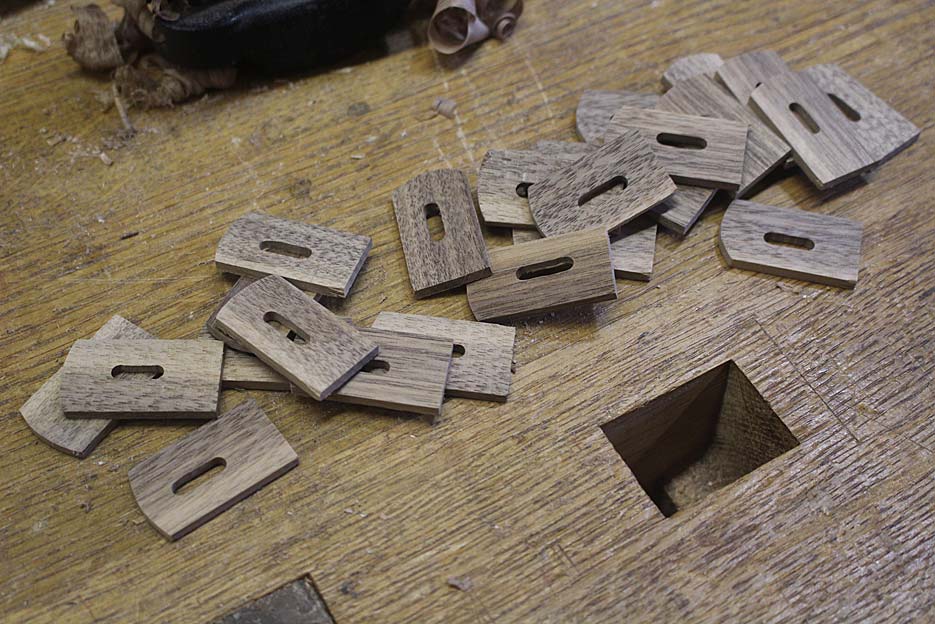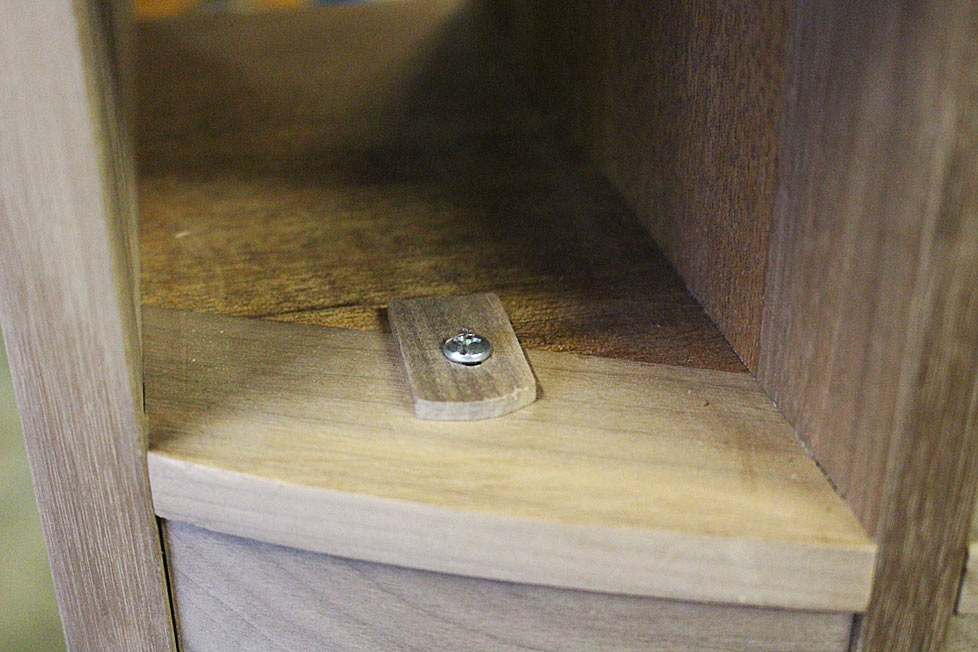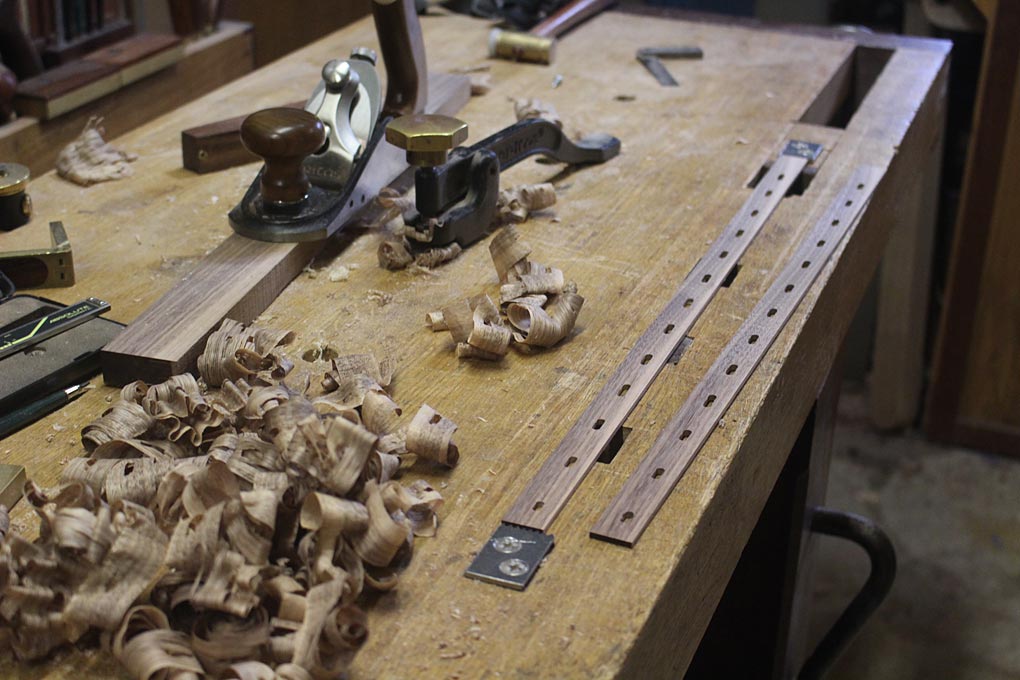MikeG.":3l12qb74 said:
All the old furniture I've ever look at has the grain of the stops running left/ right rather than in/ out, Richard, but as you say, there is a perfectly good argument either way.
It's interesting how something made for essentially the same purpose can vary from maker to maker, Mike. Of course, another common version of the drawer stop is a block of wood set behind the drawer front, which may be fixed to the divider by either nails or screws, usually with glue as well. With this type I've seen variations from a simple rectangular piece to something where the back corners of the simple rectangle are beveled for a more 'elegant' plan view. And with this type I've also seen them set up where the grain runs left to right along the divider, but in my experience frequently where the grain runs front to back. The latter tends to be my preference if making this type of stop. I can't say it's better really, but I do it because I think it looks neater.
On the other hand, who the hell (customer wise) really looks at drawer stops to care? And it's just another one of those things that perhaps presents an air of better or superior craftsmanship, but again, it's my experience that for the most part, you can't really sell craftsmanship as the primary buying consideration to a client, although it's generally in the mix of factors somewhere, even if not overtly expressed by either party. On the whole, clients buy because they like the look, the functionality, the piece(s), it suits their property/aspirations/whatever ... and the price suits their budgetary expectations, whether low or high, and that can be a bit of a minefield. I've even experienced a situation where I could make all the profit I wanted at a price I was comfortable with, but I'd realised the client expected to pay more, and if they weren't quoted a higher price they'd wonder what was missing if they got the lower on. So, if I recall it right, I bumped up the price by about thirty percent, and got the job. It suited both of us.
Anyway, sorry to have wandered well away from the original topic, but it was one that somehow caused me to reflect on one or two of my experiences, and I just happen to have some time on my hands allowing to waste a bit of it, ha, ha. Slainte.





































